helicobacterpyloriinfectioninflammationulcerdiagram Exeter Gut Clinic
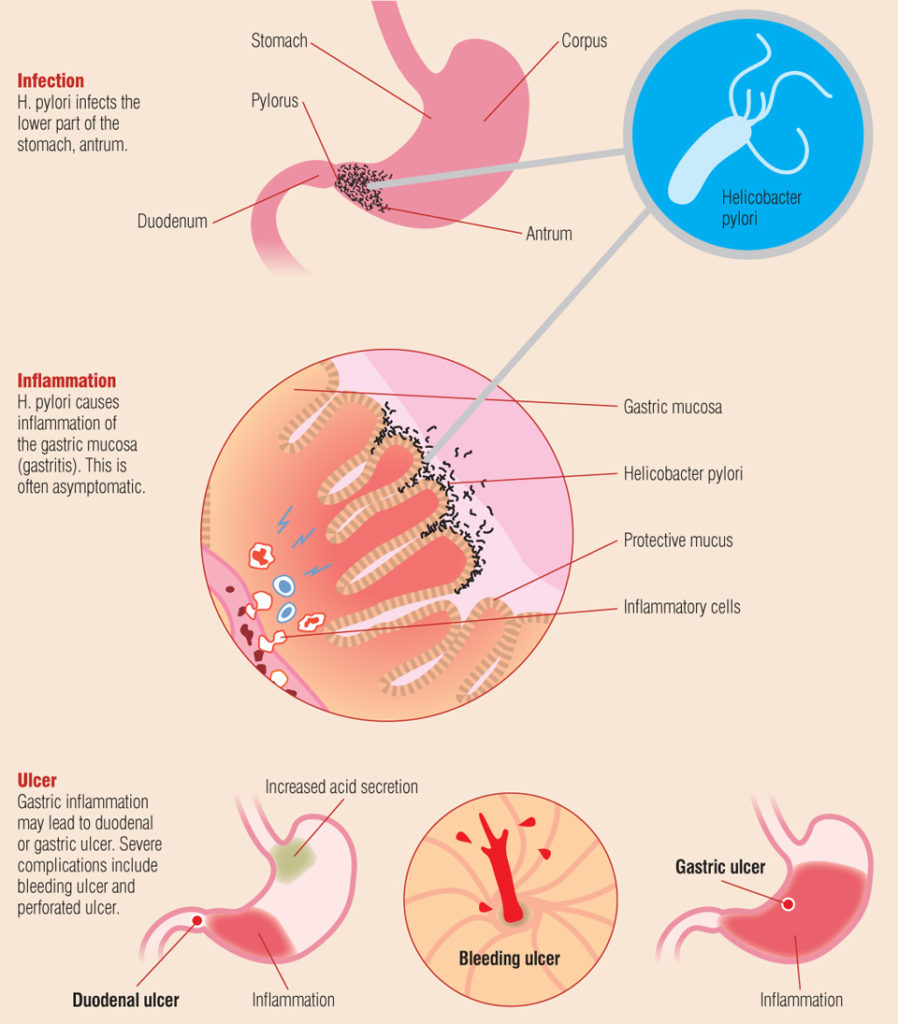
De Helicobacter pylori is een bacterie die in het slijmvlies van de maagwand kan leven. De Helicobacter pylori kan dus in het zure milieu van de maag overleven. Begin jaren tachtig ontdekten (onder andere) twee Australische onderzoekers dat deze bacterie een erg belangrijke rol speelt bij het ontstaan van een maagzweer. De maag.
Helicobacter pylori La bacteria que puede causar cáncer Blog de Biotecnología by María Iranzo

Request an Appointment. 410-955-5000 Maryland. 855-695-4872 Outside of Maryland. +1-410-502-7683 International. Find a Doctor. H. pylori (Heliobacter pylori) is a type of bacteria that infects your stomach. It can damage the tissue in your stomach and the first part of your small intestine (the duodenum).
Helicobacter Pylori in Een Microscopische Omgeving. is Een Bacterie Die De Binnenkant Van De

H. pylori infection—a potentially modifiable risk factor for gastric cancer. H. pylori is an established gastric carcinogen, accounting for up to 89% of non-cardia gastric cancers globally [].In 2018, H. pylori was responsible for an estimated 810,000 new cases of non-cardia gastric adenocarcinoma worldwide, making it the leading cause of infection-attributable cancer ahead of high-risk.
Helicobacter Pylori Remedios caseros para eliminarla ¡Infórmate!

Helicobacter pylori, previously known as Campylobacter pylori, is a gram-negative, flagellated, helical bacterium.Mutants can have a rod or curved rod shape, and these are less effective. Its helical body (from which the genus name, Helicobacter, derives) is thought to have evolved in order to penetrate the mucous lining of the stomach, helped by its flagella, and thereby establish infection.
Helicobacter Pylori (bacteria en el estómago) Causas, síntomas y tratamiento

H. pylori can damage the protective lining of the stomach and small intestine. This can allow stomach acid to create an open sore (ulcer). About 10% of people with H. pylori will develop an ulcer. Inflammation of the stomach lining. H. pylori infection can affect the stomach, causing irritation and swelling (gastritis). Stomach cancer.
Microscopic view of Helicobacter Pylori Bacterium VanderbiltIngram Cancer Center

Helicobacter pylori (H. pylori) is a gram-negative spiral-shaped bacterium that affects up to 50% of the population worldwide, with a higher prevalence in developing countries.[1][2][3] H. pylori is the most important cause for chronic or atrophic gastritis, peptic ulcer, gastric lymphoma, and gastric carcinoma[4]; however, these complications are less often seen in children and adolescents.
Helicobacter pylori bacteria Stock Image B220/1133 Science Photo Library

Pale skin. Vomit that is bloody, black, or looks like coffee grounds. Serious, sharp stomach pain. An H. pylori infection is also a risk factor for stomach cancer, which has few symptoms at first.
Helicobacter Pylori Infection world of health

1. Introduction. The gram-negative, spiral-shaped bacterium Helicobacter pylori is a widespread and prevalent opportunistic pathogen most commonly associated with gastritis, peptic ulcers, and various other gastrointestinal ailments [].There is robust evidence that H. pylori is acquired during childhood in most people, and is significantly determined by geography and quality of life [].
Définition Helicobacter pylori Campylobacter pyloridis Futura Santé
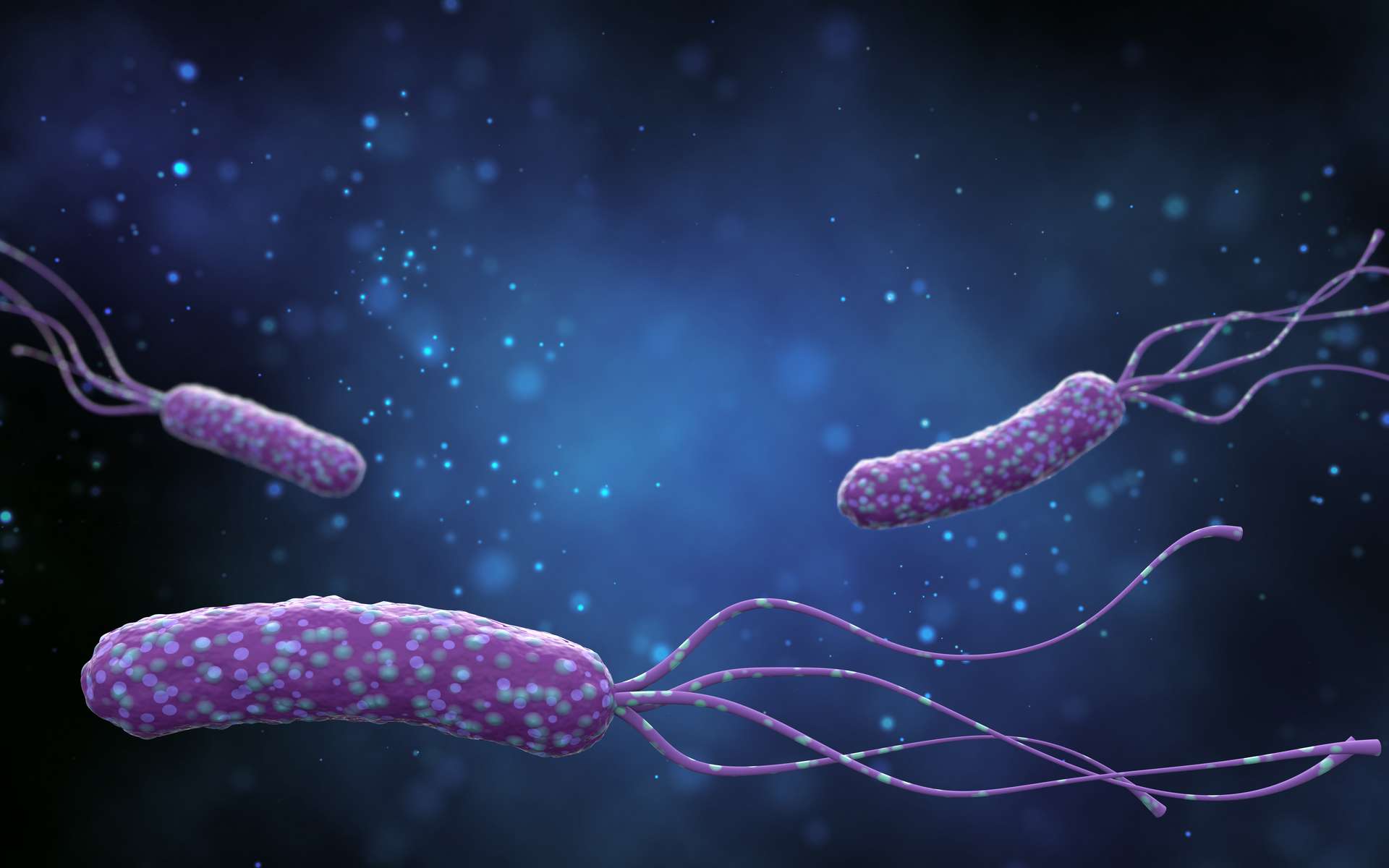
Helicobacter pylori, infectie met. Een infectie met Helicobacter pylori wordt veroorzaakt door een bacterie in het slijmvlies van de maagwand. Deze bacterie kan het zure milieu van de maag overleven. U kunt de bacterie bij u dragen zonder dat u klachten heeft. Besmetting met de helicobacter pylori ontstaat waarschijnlijk van persoon op persoon.
Helicobacter Pylori Infection, Bacteria Symptoms, Test, Treatment

Bij ruim 11 % van de mensen met maagklachten wordt de bacterie Helicobacter pylori in de ontlasting aangetroffen. Daar veel mensen deze bacterie bij zich dragen is een positieve uitslag geen bewijs van een infectie. In sommige gevallen wordt de maag onderzocht dmv. een gastroscopie. De diagnose van een Helicobacter pylori infectie berust dan op.
Helicobacter pylori bacteria, SEM Stock Image C001/9542 Science Photo Library

Helicobacter pylori-infectie | CWZ Nijmegen. Aandoeningen. Helicobacter pylori-infectie. U wordt ziek na besmetting met de bacterie helicobacter pylori. Deze bacterie kan in de zure maag overleven. Meestal geeft dit geen problemen of alleen vage klachten, maar soms wordt u wel ziek.
Helicobacter Pylori Bacteria 2 by Juergen Berger/science Photo Library
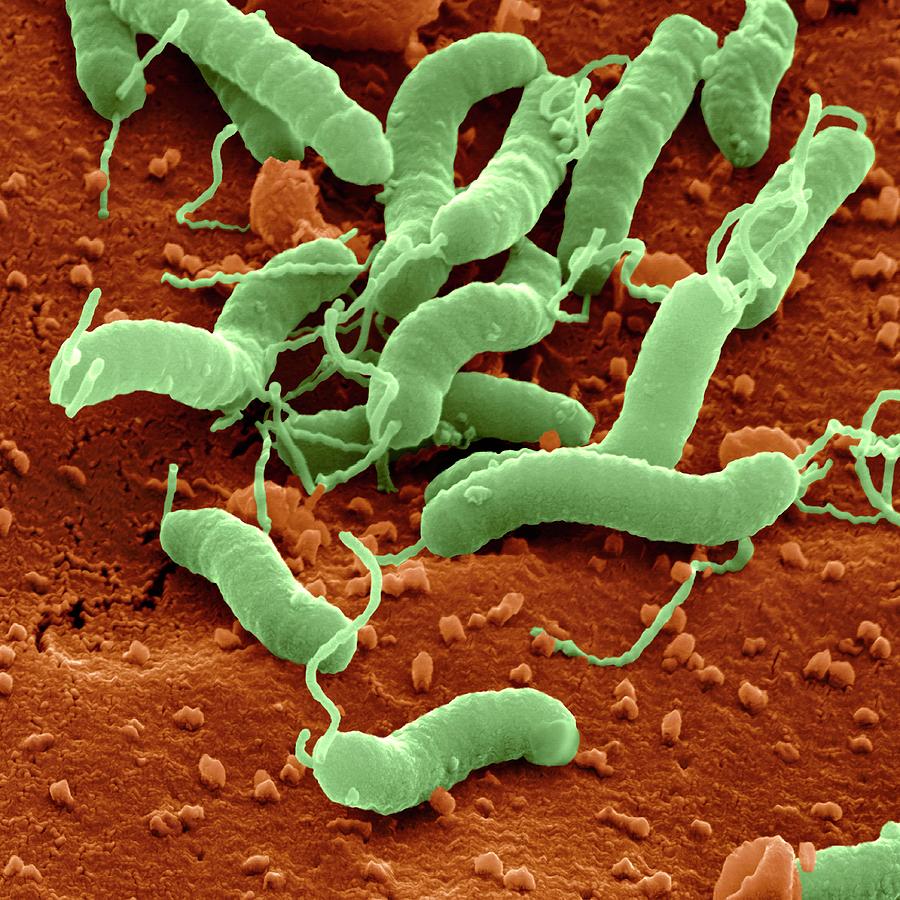
Introduction. Helicobacter pylori is the causative agent of chronic gastric infections, and it has been estimated that at least half of the world's population is infected. A recent meta-analysis on the global prevalence of H. pylori infection has shown an overall prevalence of 44.3%, and estimated prevalences are as high as 89.7% in Nigeria and as low as 10.0% in Indonesia and 8.9% in Yemen 1.
Helicobacter pylori bacteria Stock Image B220/1389 Science Photo Library

Effects of H. pylori infection vary depending on the location within the stomach. Antral-predominant infection results in increased gastrin production, probably via local impairment of somatostatin release. Resultant hypersecretion of acid predisposes to prepyloric and duodenal ulcer. Body-predominant infection leads to gastric atrophy and.
Helicobacter Pylori Infection, Bacteria Symptoms, Test, Treatment
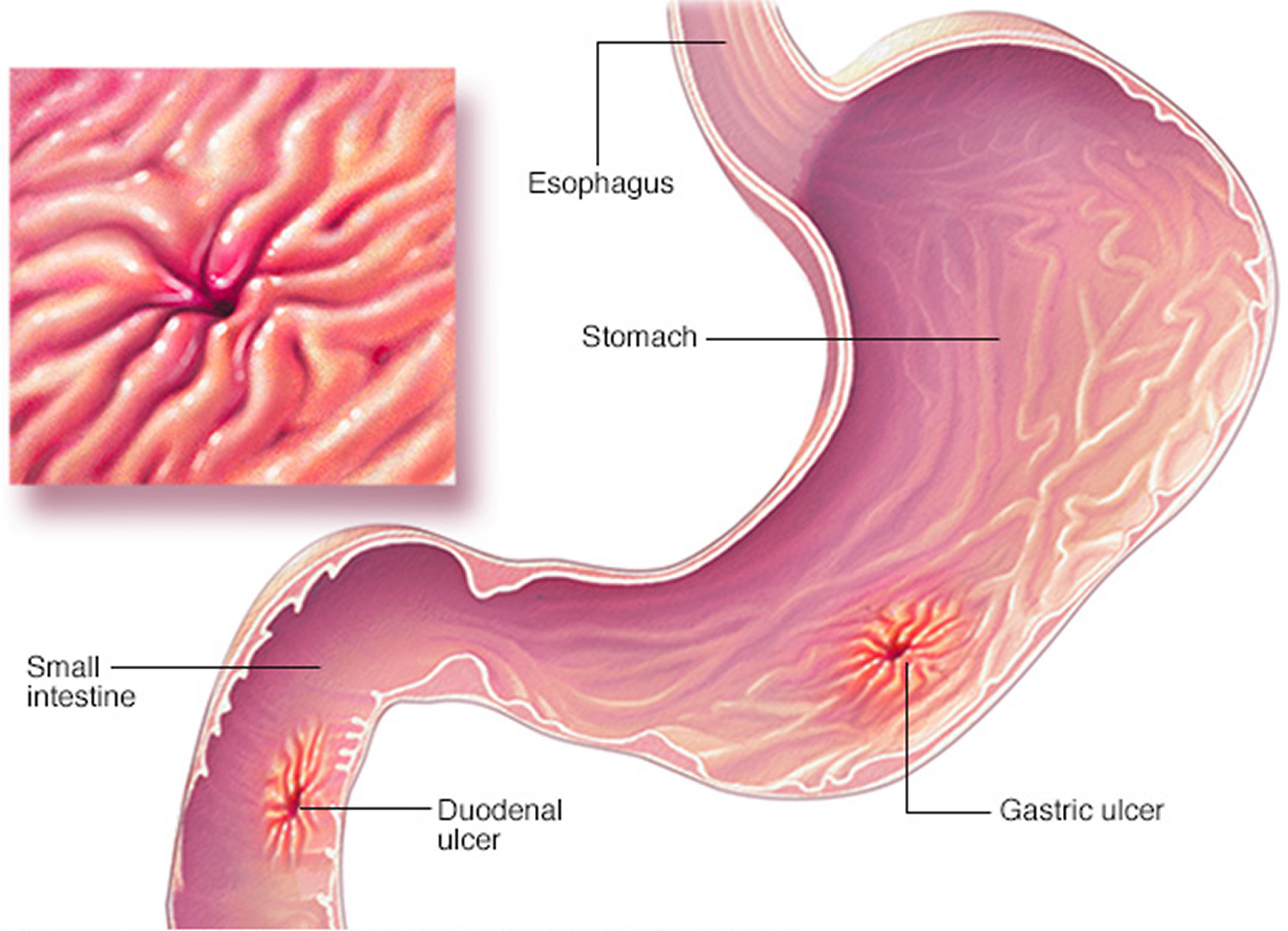
Helicobacter pylori (H. pylori) is a corkscrew-shaped bacteria that was identified in 1982 as a principal cause of stomach ulcers and chronic gastritis, conditions which were formerly believed to be caused by stress and poor diet. Symptoms of H. pylori may include stomach pain, bloating, nausea, and tarry stools.
Bacteria helicobacter pylori hires stock photography and images Alamy
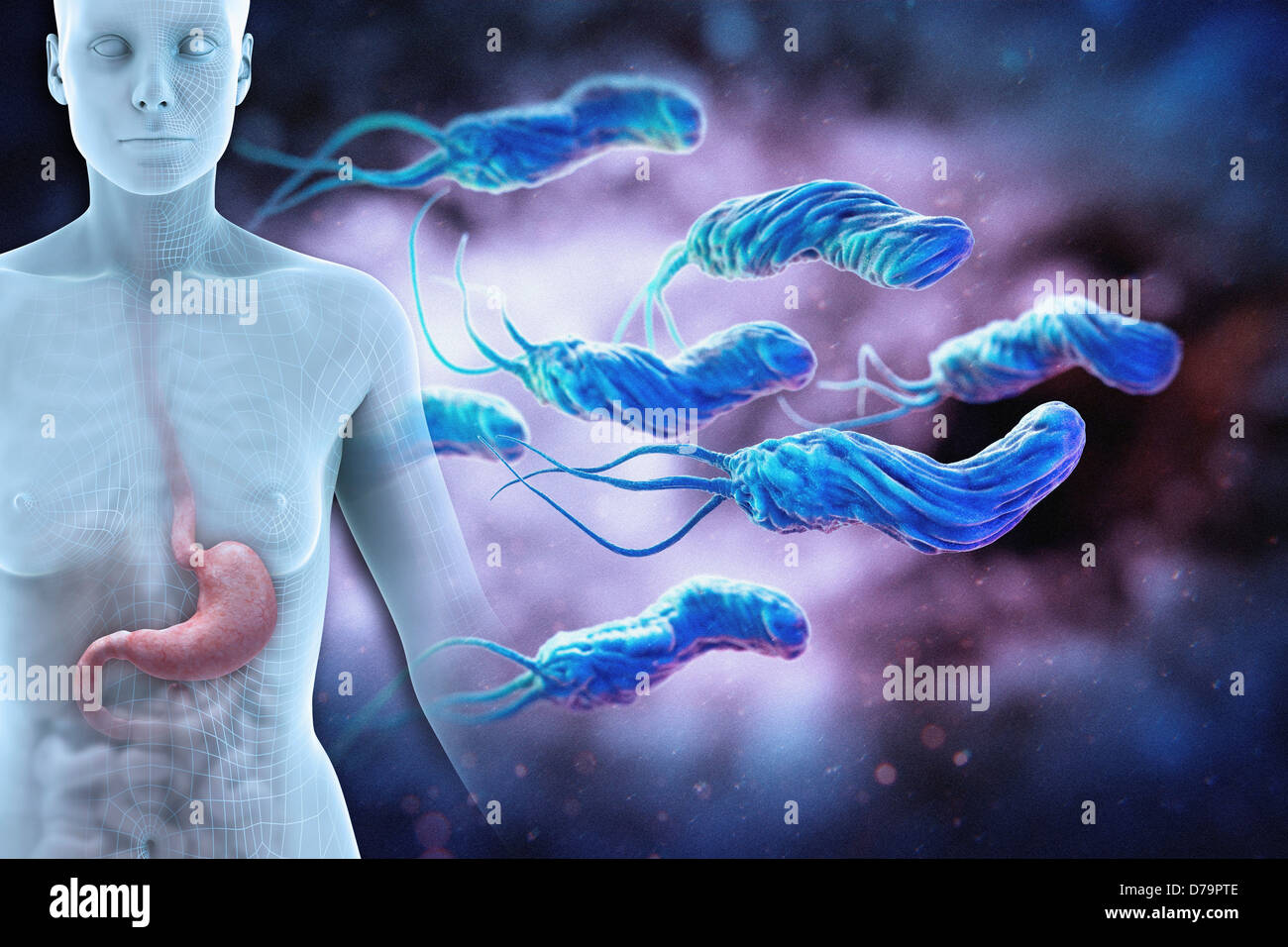
Although the medicinal mushroom Hericium erinaceus is used extensively in traditional Chinese medicine to treat chronic superficial gastritis, the underlining pharmaceutical mechanism is yet to be fully understood. In this study, minimum inhibitory concentration (MIC) values of extracts prepared fro.
Helicobacter pylori bacteria, illustration Stock Image F021/3522 Science Photo Library

INTRODUCTION. Helicobacter pylori infection is the most prevalent infection in the world ().This infection is the main cause of different diseases such as functional dyspepsia, gastritis, gastroduodenal ulcers, and gastric cancer ().H. pylori is a bacterium characterized by the development of resistance to multiple antibiotics. The World Health Organization (WHO) establishes antibiotic.
.

